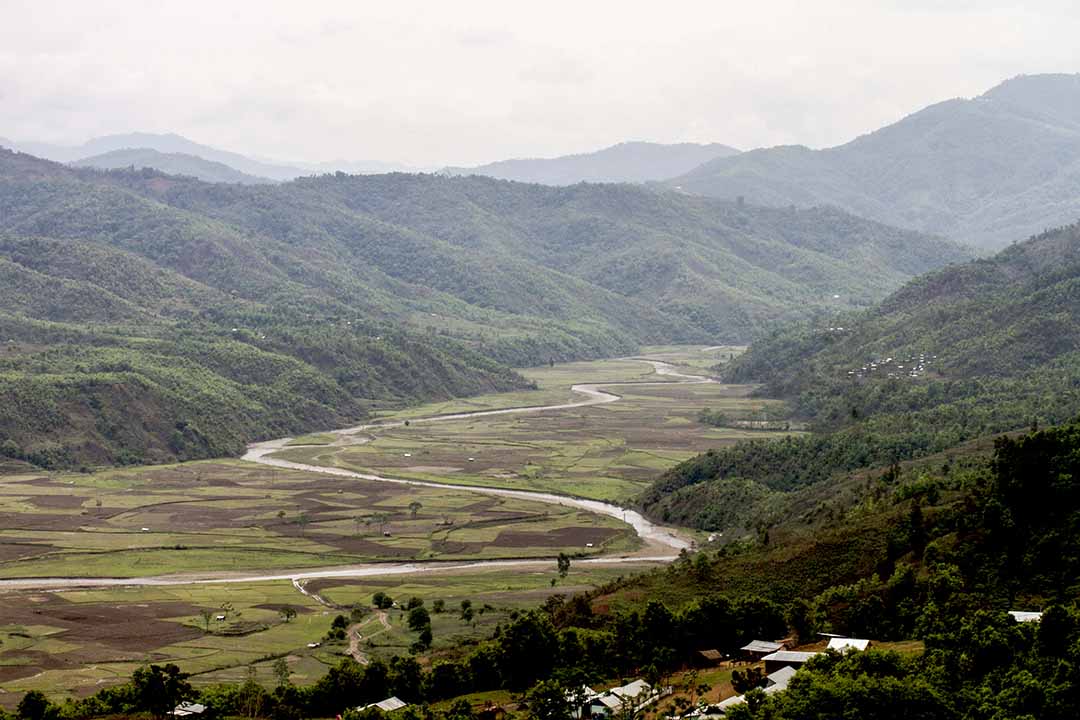One insight from the ongoing ethnic conflict in Manipur, and indeed the periodic explosion of similar violence in most other Northeast states, is the problem posed by widely different notions of land and ownership amongst different communities. It is ironic but illustrative that there are so many boundary disputes between these states although the notion of the modern boundary was unknown here before the Treaty of Yandaboo of 1826 by which the British annexed Assam and merged it with Bengal.
As Lord Curzon pointed out in his Romanes lecture 1907 titled Frontiers, it is not just in the Northeast, but the world outside of Europe where the idea of artificially delineated boundaries were alien. There were natural boundaries determined by rivers, mountains, deserts etc., but even these were not the closely guarded and precise limits of national domains. Boundaries in this world also waxed and waned, depending on the powers of rulers and chiefs.
The British being thus unaccustomed to territories with no precise limits, ensured boundaries were drawn wherever they took over. While these boundaries served their purposes, they often left problems for those who inherited them. This history of Northeast boundaries is intriguing but for now, a look at the land-people relationship, which also complicated the British boundary making exercises in many ways.
British administrative institution introduced in Assam reflected the challenges of dealing with a mix of state-bearing populations coming under centralised bureaucracies of kingdoms, and non-state communities living in the uncharted hills and under no definite administration. Assam’s plains hence were much easier for the British to handle, unlike the hills where the authorities of each village, tribe and clan did not run beyond each’s closed communities. The British therefore introduced normal land revenue administration in the plains but left the surrounding hills as Excluded or Partially Excluded areas, and separated the two regions by an Inner Line, drawn by the Bengal Eastern Frontier Regulation 1873. In 1907, the British also introduced a similar administrative arrangement in their protectorate state of Manipur.
That communities living in different stages of economy, would have different outlook to land is a foregone conclusion. For the nomads, anywhere they pitch their tents is their land, but not so for settled agriculturists, feudal principalities or the modern state. When all of these communities with their different outlook to land live in the same geographical region and era, conflicts are only to be expected. One of Manipur’s major problems is this.
Anthony Sattin sketches this essential friction in Nomads: The Wanderers Who Shaped Our World. He sees metaphors of this in mythologies such as the Egyptian Seth and Osiris, Homer’s Odyssey, but most interestingly in the first murder in the Bible where the son of Adam and Eve, Cain kills his brother Abel. Cain, is a tiller of the soil, and Abel a wandering shepherd. The primal nature of this friction is loudly evident.
What needs however to be remembered is the modern state is premised on a sedentary and enumerable population. Democracy itself would become facile if its population were to be constantly shifting. Government infrastructures would also have to perpetually chasing proliferating villages.
If and when the Manipur crisis reaches an amicable resolution, all must realise the need come to terms with the new reality of sedentary lifestyle. This will transform the endemic land tussles between its different communities as well as with the state. While indigenous ways of life must be respected, a common denominator is also indispensable to ensure good administration.
The Manipur government must also reconsider its practice of giving recognition to new villages periodically. Because of a peculiar land holding tradition amongst the Kukis especially, whereby the chiefs own the village and the villagers are landless, there is a tendency for villages to leave and start their own villages. This is also one reason why Kukis felt most targeted when the government initiated an encroachers eviction drive from reserved and protected forests. Neighbouring Mizoram where Kuki-Zo kindred tribes live, is a shining example in this. Upon the introduction of the 6th Schedule of the Constitution, the autocratic rights of 259 chiefs were abolished on popular demand in 1954, giving stability to its villages.
This article was first published in The Telegraph. The original story can be read HERE












